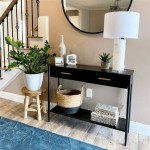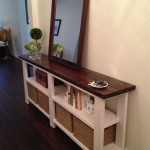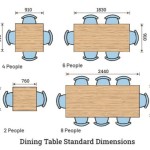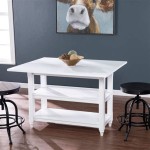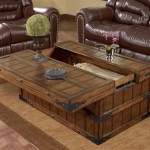The Enduring Appeal of the Mid-Century Modern Pedestal Dining Table
The mid-century modern aesthetic, characterized by clean lines, organic shapes, and a blend of functionality and artistry, continues to resonate within interior design. Among the iconic furniture pieces of this era, the pedestal dining table stands out for its distinctive design and practical advantages. Its enduring popularity is a testament to its timeless style and versatile application within various living spaces.
A pedestal dining table is defined by its single supporting column, or pedestal, which replaces the traditional four legs. This structural difference offers several benefits, contributing to the table’s aesthetic appeal and usability. The pedestal provides greater legroom, eliminating the obstruction caused by conventional table legs. It also offers visual simplicity, creating a less cluttered look that complements the minimalist principles of mid-century modern design. The absence of multiple legs allows for more flexible seating arrangements, accommodating a larger number of diners comfortably.
The mid-century modern period witnessed a surge in innovative furniture designs. Material experimentation was a key element, with designers embracing new industrial materials alongside traditional wood. The pedestal dining table was no exception, often featuring a combination of materials such as wood, metal, and laminates. This exploration resulted in a wide array of designs, catering to different tastes and functional requirements. Some tables featured solid wood pedestals, showcasing the natural beauty of materials like walnut, teak, and oak. Others incorporated metal bases, often in chrome or painted finishes, adding a touch of industrial chic. Tabletops were commonly made from wood veneer, laminate, or glass, offering diverse aesthetic options. The use of these different materials allowed for the creation of tables that were both visually appealing and durable.
Key Points of Mid-Century Modern Pedestal Dining Tables: Legroom and Design
One of the most practical advantages of a pedestal dining table is the enhanced legroom it provides. Traditional tables with four legs invariably create obstructions for those seated around them. Individuals must navigate around the legs, which can be especially problematic in smaller dining areas. The single pedestal eliminates this issue, allowing for unrestricted movement and a more comfortable dining experience. This feature is particularly beneficial when accommodating a larger group of people, as it enables more efficient seating without compromising comfort. The absence of legs also creates a cleaner visual line, contributing to the overall aesthetic of the dining space. This uninterrupted space around the table fosters a sense of openness and fluidity, making the room feel more spacious and inviting.
The design of the pedestal itself became a focal point for many mid-century modern designers. Rather than simply being a functional support, the pedestal was often conceived as an artistic element, contributing to the overall aesthetic of the table. Some pedestals featured flared bases, offering visual stability and a dynamic silhouette. Others were sculpted into organic shapes, echoing the biomorphic forms that were popular during the period. Variations in material also played a significant role in the design. For example, a wood pedestal might be tapered or carved to highlight the grain and texture of the wood, while a metal pedestal might be polished to a high sheen or painted in a bold color. The shape, material, and finish of the pedestal were carefully considered to complement the tabletop and create a cohesive overall design.
The choice of tabletop material and shape also significantly impacted the aesthetic of the pedestal dining table. Round tabletops were particularly popular, as they facilitated conversation and created a sense of intimacy. The circular form contrasted beautifully with the verticality of the pedestal, resulting in a visually balanced design. Oval tabletops offered a similar sense of flow while providing a slightly more elongated surface area. Rectangular tabletops were also used, especially in larger dining spaces, but required careful consideration of the pedestal's placement to ensure adequate support and legroom. Materials ranged from wood veneer, which offered a warm and natural look, to laminate, which provided durability and easy maintenance, and glass, which created a sense of lightness and transparency. The edge detail of the tabletop was another important design element. Some tables featured a simple, straight edge, while others had a rounded or beveled edge, adding a subtle touch of sophistication.
Material Choices and Their Impact
The choice of materials played a crucial role in defining the character and functionality of the mid-century modern pedestal dining table. Wood, a staple material of the era, was frequently used for both the pedestal and the tabletop. Walnut, teak, and oak were popular choices, prized for their rich color, attractive grain patterns, and durability. Wood veneer was commonly used for tabletops, often applied over a core of plywood or particleboard. This allowed for the creation of large, stable surfaces without the expense and weight of solid wood. The veneer was carefully selected and applied to showcase the natural beauty of the wood grain. Wood pedestals were often sculpted or turned to create visually interesting forms, highlighting the material's inherent qualities.
Metal was another important material, often used for the pedestal base. Chrome was a popular choice, offering a sleek and modern look. The reflective surface of chrome added a touch of glamour and contrasted well with the warmth of wood. Painted metal bases were also common, offering a wider range of color options. These were often powder-coated for durability and resistance to scratches. The use of metal allowed for the creation of slender and visually lightweight pedestal designs. The combination of metal and wood created a striking contrast of textures and colors, adding visual interest to the table.
Laminates, such as Formica, were also widely used for tabletops. These materials offered durability, easy maintenance, and a wide range of color and pattern options. Laminate tabletops were particularly popular in kitchens and casual dining areas, where practicality was a priority. The use of laminate allowed for the creation of tables that were both stylish and functional. Glass tabletops were another option, offering a sleek and modern look. Glass created a sense of lightness and transparency, making the table feel less bulky. Glass tabletops were often paired with metal pedestals, creating a sophisticated and minimalist aesthetic.
The choice of materials was not solely based on aesthetics. Durability, cost, and ease of maintenance were also important considerations. Designers sought to create tables that were both beautiful and practical, using materials that would withstand the rigors of daily use. The mid-century modern pedestal dining table is a testament to the era's emphasis on both form and function, showcasing the thoughtful selection and combination of materials.
Versatility in Modern Living Spaces
The mid-century modern pedestal dining table's enduring appeal lies in its versatility and ability to adapt to various living spaces. Its clean lines and minimalist design make it a suitable addition to both contemporary and traditional interiors. The table's form can complement a wide range of design styles, from the sleek and modern to the more eclectic and bohemian. This adaptability has contributed to its continued popularity and relevance in contemporary interior design.
In smaller apartments or homes, the pedestal dining table's space-saving design is particularly advantageous. The single pedestal allows for maximum legroom and seating capacity, making it an ideal choice for compact dining areas. The absence of multiple legs creates a less cluttered look, making the room feel more spacious and open. The table can be easily positioned in a corner or against a wall to maximize floor space. Its simple and elegant design blends seamlessly with other furniture, creating a cohesive and inviting living space.
In larger homes, the pedestal dining table can serve as a focal point in the dining room or kitchen. Its distinctive design adds a touch of sophistication and style. The table can be paired with a variety of chairs, from classic mid-century modern designs to more contemporary styles. The size of the tabletop can be adjusted to accommodate different numbers of diners, making it suitable for both intimate gatherings and larger dinner parties. The table's versatility allows it to adapt to changing needs and preferences, making it a timeless and valuable addition to any home.
The pedestal dining table's versatility extends beyond its functional attributes. Its aesthetic appeal also allows it to be used in a variety of creative ways. The table can be used as a workspace, providing a comfortable and stylish surface for working from home. It can also be used as a display surface for showcasing decorative objects or artwork. The table's clean lines and simple design provide a neutral backdrop that allows other elements in the room to stand out. Its adaptability and aesthetic appeal make it a versatile and valuable piece of furniture for any home.

Armen Living Cirque 54 In Walnut Wood Mid Century Modern Pedestal Round Dining Table With Epoxy Black Metal Base Lccqdiwa The Home

Round Dining Table Handmade In Solid Walnut Cherry Mahogany Or Oak Wood Mid Century Modern Pedestal Base Etsy

Jofran Nash Mid Century Modern 50 Round Pedestal Dining Table In Walnut 2271 Nash50btw By Rooms Outlet

Mid Century Danish Yin Yang Teak Extending Dining Table By Ole Gjerløv Knudsen Torben Lind For France Son Sale At Pamono

Midcentury Modern Oval Dining Table Pedestal Wood On Base Walnut Tables Etsy

Round Dining Table 46 With Pedestal Base Handmade Midcentury Style Walnut For Sale At 1stdibs
Sold Brute Strength Round Mid Century Pedestal Dining Table Casa Victoria Vintage Furniture On Los Angeles Sunset Boulevard

Midcentury Modern Table Oval Dining Loewen Design Studios

Modway Mid Century Modern 36 Round White Wood Top Metal Pedestal Dining Table Ebay

Dining Table For 6 Black Kitchen Room Pedestal Wood Mid Century Modern Fa 1 Piece Pick N Save

